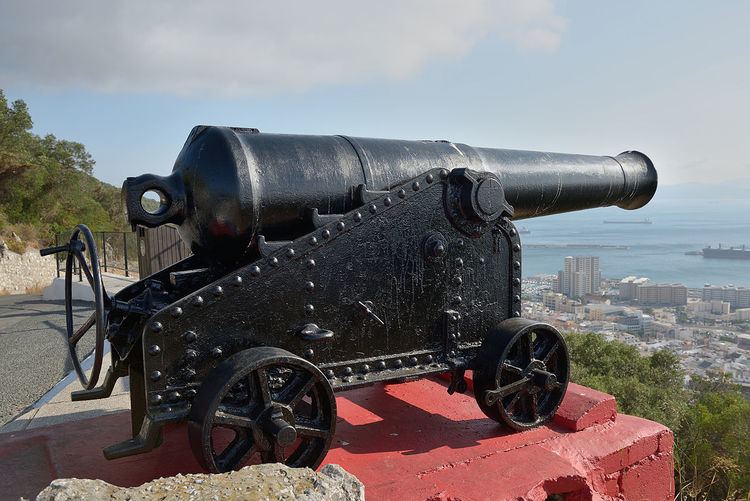Type Coast defence gun In service 1870 - 1902 Designed 1847 | Place of origin United Kingdom Designer Lt Col William Dundas | |
 | ||
Used by British Army
British Colonies | ||
The RML 64 pounder 58 cwt guns (converted) were British rifled muzzle-loading guns converted from obsolete smoothbore 32-pounder 58 cwt guns.
Contents
Design
When Britain adopted rifled ordnance in the 1860s it still had large stocks of serviceable but now obsolete smoothbore guns. Gun barrels were expensive to manufacture, so the best and most recent models were selected for conversion to rifled guns, for use as second-line ordnance, using a technique designed by William Palliser. The Palliser conversion was based on what was accepted as a sound principle that the strongest material in the barrel construction should be innermost, and hence a new tube of stronger wrought iron was inserted in the old cast iron barrel, rather than attempting to reinforce the old barrel from the outside.
This gun was based on the cast-iron barrel of the 32-pounder 58 cwt gun, which previously fired a 32-pound solid shot. The gun was bored out to 10.5 inches and a new built-up wrought iron inner tube with inner diameter of 6.29 inches was inserted and fastened in place. The gun was then rifled with 3 grooves, with a uniform twist of 1 turn in 40 calibres (i.e. 1 turn in 252 inches), and proof fired. The proof firing also served to expand the new tube slightly and ensure a tight fit in the old iron tube.
Deployment
Unlike the 71 cwt converted gun, this nature of gun was issued for Land Service (LS) only.
The gun mountings for coast defence in both British and colonial locations varied enormously. Carriages in both wood and iron varied in complexity – from a simple wooden garrison carriage, traversing carriages, right through to some guns mounted on Moncrieff Disappearing gun carriages.
They became obsolete for coast artillery use in 1902, whereupon most of them were scrapped and disposed of.
